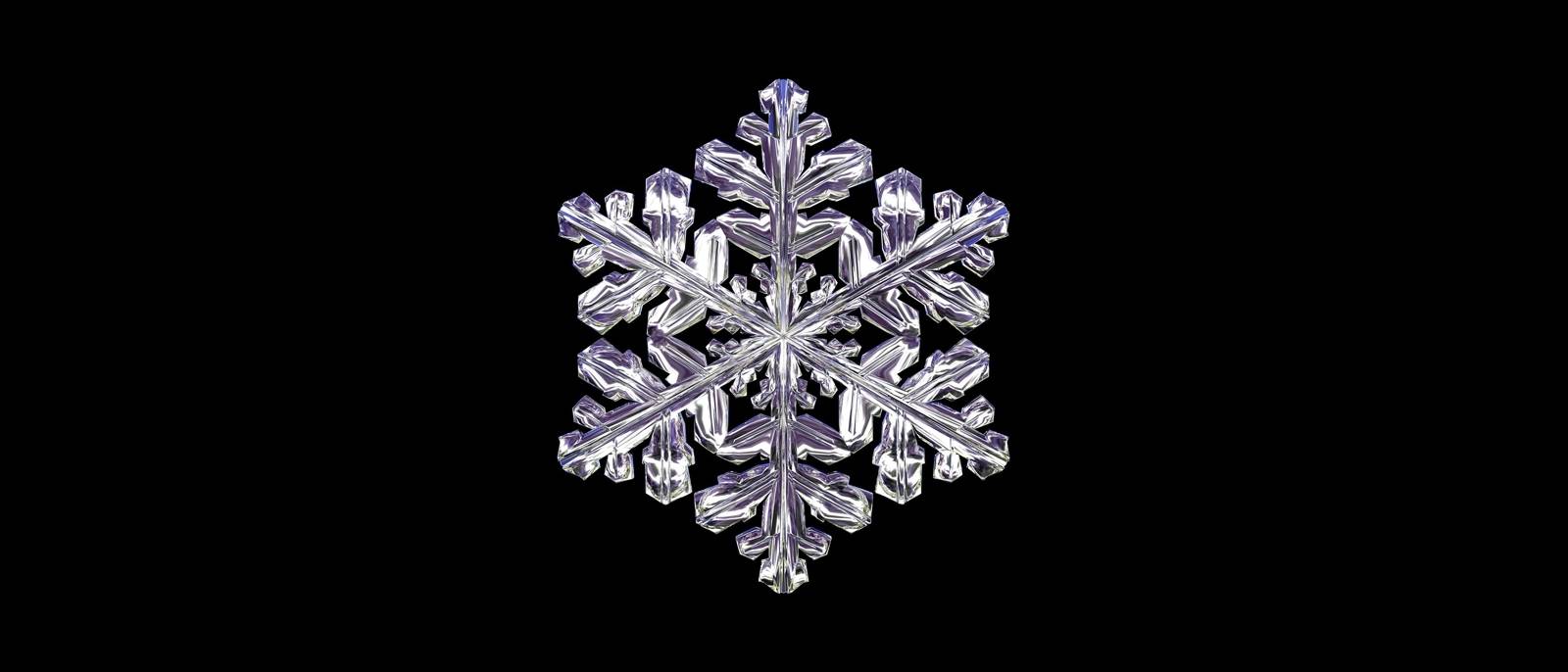Snowflakes, Symbols of Individual Perfection
According to an ancient Zen proverb “A snowflake never falls in the wrong place.”
The beauty of snowflakes, their hypnotizing silhouettes and their mysterious formation process have made them the center of legends, symbols of purity and accurate proverbs spanning different cultures and philosophies.
One of the most widely spread suppositions about these minute ice crystals is that no two are alike ––assertion that has led scientists and artists to carry out arduous researches, photographing and comparing them for years on end. And although this belief has never been scientifically proven, it is an expression of the unrepeatable quality that defines us as humans and characterizes our universe and the events in our everyday world. There is not a single person, thing or circumstance that is identical to another.
But far from scientific explanations surrounding the formation of these flakes —the direction of the wind, humidity and temperature—, Zen philosophy has found in them a perfect symbol of life and the events that comprise it.
Based on their voyage across the terrestrial atmosphere and their final destination —adding to their incomparable lightness and beautiful forms— there is a Zen proverb that states: “A snowflake never falls in the wrong place”; or, in other words, nothing happens fortuitously.
This precept illustrates one of the fundamental principles of the Buddhist and Taoist philosophies: everything is perfect —in nature and in life there is no good or evil, right or wrong, just perfection. Coincidence then, is inexistent, both in nature and life.
This proverb —which combines a meteorological phenomenon as symbolic as snow and human subjectivity— leads us to question the value of the events of our past and the judgments we tend to make about them. In some way it offers us a comforting vision (as comforting as seeing snow fall) in our life and its design.
Related Articles
Pictorial spiritism (a woman's drawings guided by a spirit)
There are numerous examples in the history of self-taught artists which suggest an interrogation of that which we take for granted within the universe of art. Such was the case with figures like
Astounding fairytale illustrations from Japan
Fairy tales tribal stories— are more than childish tales. Such fictions, the characters of which inhabit our earliest memories, aren’t just literary works with an aesthetic and pleasant purpose. They
A cinematic poem and an ode to water: its rhythms, shapes and textures
Here lies One Whose Name was writ in Water. - John Keats Without water the equation of life, at least life as we know it, would be impossible. A growing hypothesis holds that water, including the
Watch beauty unfold through science in this "ode to a flower" (video)
The study of the microscopic is one of the richest, most aesthetic methods of understanding the world. Lucky is the scientist who, upon seeing something beautiful, is able to see all of the tiny
To invent those we love or to see them as they are? Love in two of the movies' favorite scenes
So much has been said already, of “love” that it’s difficult to add anything, much less something new. It’s possible, though, perhaps because even if you try to pass through the sieve of all our
This app allows you to find and preserve ancient typographies
Most people, even those who are far removed from the world of design, are familiar with some type of typography and its ability to transform any text, help out dyslexics or stretch an eight page paper
The secrets of the mind-body connection
For decades medical research has recognized the existence of the placebo effect — in which the assumption that a medication will help produces actual physical improvements. In addition to this, a
The sea as infinite laboratory
Much of our thinking on the shape of the world and the universe derives from the way scientists and artists have approached these topics over time. Our fascination with the mysteries of the
Sharing and collaborating - natural movements of the creative being
We might sometimes think that artistic or creative activity is, in essence, individualistic. The Genesis of Judeo-Christian tradition portrays a God whose decision to create the world is as vehement
John Malkovich becomes David Lynch (and other characters)
John Malkovich and David Lynch are, respectively, the actor and film director who’ve implicitly or explicitly addressed the issues of identity and its porous barriers through numerous projects. Now










